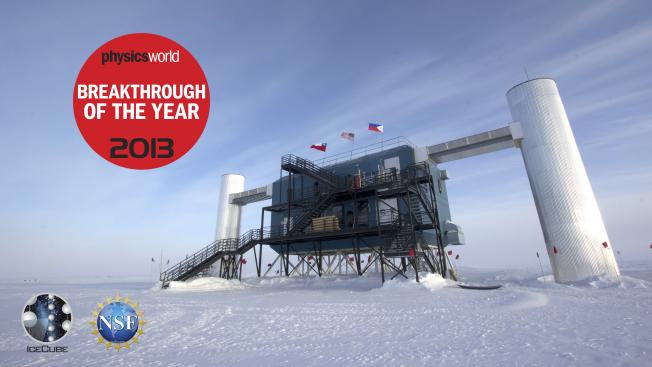CTA Contributions to the 34th International Cosmic Ray Conference (ICRC2015)
(2015)
Authors:
The CTA Consortium, :, A Abchiche, U Abeysekara, Ó Abril, F Acero, BS Acharya, M Actis, G Agnetta, JA Aguilar, F Aharonian, A Akhperjanian, A Albert, M Alcubierre, R Alfaro, E Aliu, AJ Allafort, D Allan, I Allekotte, R Aloisio, J-P Amans, E Amato, L Ambrogi, G Ambrosi, M Ambrosio, J Anderson, M Anduze, EO Angüner, E Antolini, LA Antonelli, M Antonucci, V Antonuccio, P Antoranz, C Aramo, A Aravantinos, A Argan, T Armstrong, H Arnaldi, L Arnold, L Arrabito, M Arrieta, M Arrieta, K Asano, HG Asorey, T Aune, CB Singh, A Babic, M Backes, A Bais, S Bajtlik, C Balazs, M Balbo, D Balis, C Balkowski, O Ballester, J Ballet, A Balzer, A Bamba, R Bandiera, A Barber, C Barbier, M Barceló, A Barnacka, U Barres de Almeida, JA Barrio, S Basso, D Bastieri, C Bauer, A Baushev, U Becciani, Y Becherini, J Becker Tjus, V Beckmann, W Bednarek, W Benbow, D Benedico Ventura, J Berdugo, D Berge, E Bernardini, S Bernhard, K Bernlöhr, B Bertucci, M-A Besel, N Bhatt, P Bhattacharjee, S Bhattachryya, B Biasuzzi, G Bicknell, C Bigongiari, A Biland, S Billotta, W Bilnik, B Biondo, T Bird, E Birsin, E Bissaldi, J Biteau, M Bitossi, O Blanch Bigas, P Blasi, C Boehm, L Bogacz, M Bogdan, M Bohacova, C Boisson, J Boix Gargallo, J Bolmont, G Bonanno, A Bonardi, P Bonifacio, G Bonnoli, J Borkowski, R Bose, Z Bosnjak, A Bottani, M Böttcher, J-J Bousquet, C Boutonnet, F Bouyjou, C Braiding, L Brandt, S Brau-Nogué, J Bregeon, T Bretz, M Briggs, M Brigida, T Bringmann, W Brisken, E Brocato, P Brook, AM Brown, P Brun, G Brunetti, L Brunetti, P Bruno, M Bryan, T Buanes, N Bucciantini, G Buchholtz, J Buckley, V Bugaev, R Bühler, A Bulgarelli, T Bulik, M Burton, A Burtovoi, G Busetto, S Buson, J Buss, K Byrum, R Cameron, J Camprecios, F Canelli, R Canestrari, S Cantu, M Capalbi, M Capasso, G Capobianco, P Caraveo, J Cardenzana, S Carius, C Carlile, E Carmona, A Carosi, R Carosi, J Carr, M Carroll, J Carter, P-H Carton, R Caruso, J-M Casandjian, S Casanova, E Cascone, M Casiraghi, A Castellina, O Catalano, S Catalanotti, S Cavazzani, S Cazaux, M Cefalà, P Cerchiara, M Cereda, M Cerruti, E Chabanne, P Chadwick, C Champion, S Chaty, R Chaves, P Cheimets, A Chen, X Chen, M Chernyakova, L Chiappetti, M Chikawa, D Chinn, VR Chitnis, N Cho, A Christov, J Chudoba, M Cieślar, A Cillis, MA Ciocci, R Clay, J Cohen-Tanugi, S Colafrancesco, P Colin, E Colombo, J Colome, S Colonges, M Compin, V Conforti, V Connaughton, S Connell, J Conrad, JL Contreras, P Coppi, S Corbel, J Coridian, P Corona, D Corti, J Cortina, L Cossio, A Costa, H Costantini, G Cotter, B Courty, S Covino, G Covone, G Crimi, SJ Criswell, R Crocker, J Croston, G Cusumano, P Da Vela, Ø Dale, F D'Ammando, D Dang, M Daniel, I Davids, B Dawson, F Dazzi, B de Aguiar Costa, A De Angelis, RF de Araujo Cardoso, V De Caprio, G De Cesare, A De Franco, F De Frondat, EM de Gouveia Dal Pino, I de la Calle, GA De La Vega, R de los Reyes Lopez, B De Lotto, A De Luca, JRT de Mello Neto, M de Naurois, E de Oña Wilhelmi, F De Palma, V de Souza, G Decock, C Deil, M Del Santo, E Delagnes, G Deleglise, C Delgado, D della Volpe, P Deloye, G Depaola, M Detournay, A Dettlaff, T Di Girolamo, C Di Giulio, A Di Paola, F Di Pierro, G Di Sciascio, C Díaz, J Dick, H Dickinson, S Diebold, V Diez, S Digel, J Dipold, G Disset, A Distefano, A Djannati-Ataï, M Doert, M Dohmke, W Domainko, N Dominik, D Dominis Prester, A Donat, I Donnarumma, D Dorner, M Doro, J-L Dournaux, K Doyle, G Drake, D Dravins, L Drury, G Dubus, D Dumas, J Dumm, D Durand, D D'Urso, V Dwarkadas, J Dyks, M Dyrda, J Ebr, JC Echaniz, E Edy, K Egberts, K Egberts, P Eger, S Einecke, J Eisch, F Eisenkolb, C Eleftheriadis, D Elsässer, D Emmanoulopoulos, C Engelbrecht, D Engelhaupt, J-P Ernenwein, M Errando, S Eschbach, A Etchegoyen, P Evans, M Fairbairn, A Falcone, D Fantinel, K Farakos, C Farnier, E Farrell, S Farrell, G Fasola, S Fegan, F Feinstein, D Ferenc, A Fernandez, M Fernandez-Alonso, O Ferreira, M Fesquet, P Fetfatzis, A Fiasson, A Filipčič, M Filipovic, D Fink, C Finley, JP Finley, A Finoguenov, V Fioretti, M Fiorini, R Firpo Curcoll, H Fleischhack, H Flores, D Florin, C Föhr, E Fokitis, L Font, G Fontaine, B Fontes, F Forest, M Fornasa, A Förster, P Fortin, L Fortson, N Fouque, A Franckowiak, FJ Franco, A Frankowski, N Frega, I Freire Mota Albuquerque, L Freixas Coromina, L Fresnillo, C Fruck, M Fuessling, D Fugazza, Y Fujita, S Fukami, Y Fukazawa, T Fukuda, Y Fukui, S Funk, W Gäbele, S Gabici, A Gadola, N Galante, DD Gall, Y Gallant, D Galloway, S Gallozzi, S Gao, B Garcia, R García Gil, R Garcia López, M Garczarczyk, D Gardiol, C Gargano, F Gargano, S Garozzo, F Garrecht, D Garrido, L Garrido, D Gascon, J Gaskins, J Gaudemard, M Gaug, J Gaweda, N Geffroy, L Gérard, A Ghalumyan, A Ghedina, M Ghigo, P Ghislain, E Giannakaki, F Gianotti, S Giarrusso, G Giavitto, B Giebels, N Giglietto, V Gika, R Gimenes, M Giomi, P Giommi, F Giordano, G Giovannini, E Giro, M Giroletti, A Giuliani, J-F Glicenstein, N Godinovic, P Goldoni, M Gomez Berisso, GA Gomez Vargas, MM Gonzalez, A González, F González, A González Muñoz, KS Gothe, D Gotz, T Grabarczyk, R Graciani, P Grandi, F Grañena, J Granot, G Grasseau, R Gredig, AJ Green, AM Green, T Greenshaw, I Grenier, A Grillo, M-H Grondin, J Grube, M Grudzinska, J Grygorczuk, V Guarino, D Guberman, S Gunji, G Gyuk, D Hadasch, A Hagedorn, J Hahn, N Hakansson, N Hamer Heras, Y Hanabata, S Hara, MJ Hardcastle, J Harris, T Hassan, K Hatanaka, T Haubold, A Haupt, T Hayakawa, M Hayashida, M Heller, R Heller, F Henault, G Henri, G Hermann, R Hermel, J Herrera Llorente, A Herrero, O Hervet, N Hidaka, J Hinton, W Hirai, K Hirotani, D Hoard, D Hoffmann, W Hofmann, P Hofverberg, T Holch, J Holder, S Hooper, D Horan, JR Hörandel, S Hormigos, D Horns, J Hose, J Houles, T Hovatta, M Hrabovsky, D Hrupec, J-M Huet, M Hütten, TB Humensky, J Huovelin, J-F Huppert, M Iacovacci, A Ibarra, B Idźkowski, D Ikawa, JM Illa, D Impiombato, S Incorvaia, Y Inome, S Inoue, T Inoue, Y Inoue, F Iocco, K Ioka, M Iori, K Ishio, GL Israel, C Jablonski, A Jacholkowska, J Jacquemier, M Jamrozy, P Janecek, M Janiak, F Jankowsky, P Jean, C Jeanney, I Jegouzo, P Jenke, JJ Jimenez, M Jingo, M Jingo, L Jocou, T Jogler, CA Johnson, L Journet, C Juffroy, I Jung, PE Kaaret, M Kagaya, J Kakuwa, O Kalekin, C Kalkuhl, R Kankanyan, A Karastergiou, K Kärcher, M Karczewski, S Karkar, P Karn, J Kasperek, H Katagiri, J Kataoka, K Katarzyński, U Katz, S Kaufmann, N Kawanaka, T Kawashima, D Kazanas, N Kelley-Hoskins, B Kellner-Leidel, E Kendziorra, J Kersten, B Khélifi, DB Kieda, T Kihm, S Kisaka, R Kissmann, S Klepser, W Kluźniak, J Knapen, J Knapp, J Knödlseder, F Köck, J Kocot, A Kodakkadan, K Kodani, K Kohri, T Kojima, K Kokkotas, D Kolitzus, N Komin, I Kominis, Y Konno, K Kosack, G Koss, R Koul, G Kowal, S Koyama, J Kozioł, M Kraus, J Krause, M Krause, H Krawzcynski, F Krennrich, A Kretzschmann, P Kruger, H Kubo, V Kudryavtsev, G Kukec Mezek, J Kushida, A Kuznetsov, A La Barbera, N La Palombara, V La Parola, G La Rosa, H Laffon, T Lagadec, R Lahmann, K Lalik, G Lamanna, D Landriu, H Landt, RG Lang, D Languignon, J Lapington, P Laporte, N Latovski, D Law-Green, J-P Le Fèvre, T Le Flour, P Le Sidaner, S-H Lee, WH Lee, K Leffhalm, H Leich, MA Leigui de Oliveira, D Lelas, A Lemière, M Lemoine-Goumard, J-P Lenain, R Leonard, R Leoni, L Lessio, G Leto, A Leveque, B Lieunard, M Limon, R Lindemann, E Lindfors, A Liolios, A Lipniacka, H Lockart, T Lohse, D Loiseau, E Łokas, S Lombardi, F Longo, G Longo, A Lopatin, M Lopez, R López-Coto, A López-Oramas, D Loreggia, T Louge, F Louis, C-C Lu, F Lucarelli, D Lucchesi, H Lüdecke, PL Luque-Escamilla, O Luz, E Lyard, MC Maccarone, TJ Maccarone, E Mach, GM Madejski, A Madonna, M Mahabir, G Maier, P Majumdar, M Makariev, G Malaguti, G Malaspina, AK Mallot, S Maltezos, A Mancilla, D Mandat, G Maneva, P Manigot, N Mankushiyil, K Mannheim, N Maragos, D Marano, P Marchegiani, JA Marcomini, A Marcowith, M Mariotti, M Marisaldi, S Markoff, A Marszałek, C Martens, J Martí, J-M Martin, P Martin, G Martínez, M Martínez, O Martínez, R Marx, P Massimino, A Mastichiadis, S Mastroianni, M Mastropietro, S Masuda, H Matsumoto, S Matsuoka, S Mattiazzo, G Maurin, N Maxted, J Maya, M Mayer, D Mazin, E Mazureau, MN Mazziotta, L Mc Comb, A McCann, N McCubbin, I McHardy, R McKay, K McKinney, K Meagher, C Medina, F Mehrez, C Melioli, D Melkumyan, D Melo, T Melse, S Mereghetti, P Mertsch, M Meyer, JL Meyrelles, A Miccichè, J Michałowski, P Micolon, P Mientjes, S Mignot, A Mihailidis, T Mineo, M Minuti, N Mirabal, F Mirabel, JM Miranda, R Mirzoyan, A Mistò, A Mitchell, T Mizuno, R Moderski, I Mognet, M Mohammed, R Moharana, E Molinari, E Monmarthe, G Monnier, T Montaruli, C Monte, I Monteiro, P Moore, A Moralejo Olaizola, C Morello, E Moretti, K Mori, G Morlino, A Morselli, F Mottez, Y Moudden, E Moulin, I Mrusek, S Mueller, R Mukherjee, P Munar-Adrover, C Mundell, H Muraishi, K Murase, A Muronga, A Murphy, S Nagataki, T Nagayoshi, BK Nagesh, T Naito, D Nakajima, T Nakamori, K Nakayama, D Naumann, P Nayman, L Nellen, R Nemmen, A Neronov, V Neustroev, N Neyroud, T Nguyen, L Nicastro, J Nicolau-Kukliński, F Niederwanger, A Niedźwiecki, J Niemiec, D Nieto, M Nievas, A Nikolaidis, K Nishijima, K-I Nishikawa, K Noda, L Nogues, S Nolan, R Northrop, D Nosek, L Nozka, F Nunio, L Oakes, P O'Brien, G Occhipinti, A O'Faolain de Bhroithe, M Ogino, Y Ohira, M Ohishi, S Ohm, H Ohoka, A Okumura, J-F Olive, D Olszowski, RA Ong, S Ono, M Orienti, R Orito, A Orlati, A Orlati, J Osborne, M Ostrowski, LA Otero, D Ottaway, N Otte, I Oya, A Ozieblo, M Padovani, I Pagano, S Paiano, A Paizis, J Palacio, M Palatka, J Pallotta, K Panagiotidis, J-L Panazol, D Paneque, M Panter, MR Panzera, R Paoletti, M Paolillo, A Papayannis, G Papyan, A Paravac, JM Paredes, G Pareschi, N Park, D Parsons, P Paśko, S Pavy, M Paz Arribas, M Pech, A Peck, G Pedaletti, S Peet, V Pelassa, D Pelat, C Peres, MDC Perez, L Perri, M Persic, A Petrashyk, P-O Petrucci, B Peyaud, M Pfeifer, G Pfeiffer, G Piano, A Pichel, D Pieloth, M Pierbattista, E Pierre, F Pinto de Pinho, C Pio García, Y Piret, S Pita, A Planes, M Platino, Ł Platos, R Platzer, S Podkladkin, L Pogosyan, M Pohl, P Poinsignon, JD Ponz, A Porcelli, W Potter, S Poulios, J Poutanen, E Prandini, J Prast, R Preece, F Profeti, D Prokhorov, H Prokoph, M Prouza, M Proyetti, R Pruchniewicz, E Pueschel, G Pühlhofer, I Puljak, M Punch, R Pyzioł, F Queiroz, EJ Quel, J Quinn, A Quirrenbach, E Racero, T Räck, J Rafalski, I Rafighi, S Rainò, PJ Rajda, M Rameez, R Rando, RC Rannot, M Rataj, S Rateau, T Ravel, D Ravignani, S Razzaque, P Reardon, O Reimann, A Reimer, O Reimer, K Reitberger, M Renaud, S Renner, T Reposeur, R Rettig, B Reville, W Rhode, D Ribeiro, M Ribó, G Richards, MG Richer, J Rico, J Ridky, F Rieger, P Ringegni, PR Ristori, A Rivière, S Rivoire, E Roache, G Rodeghiero, J Rodriguez, G Rodriguez Fernandez, JJ Rodríguez Vázquez, T Rogers, G Rojas, P Romano, MP Romay Rodriguez, G Romeo, GE Romero, M Roncadelli, J Rose, S Rosen, S Rosier Lees, D Ross, P Rossiter, G Rouaix, J Rousselle, AC Rovero, G Rowell, F Roy, S Royer, A Różańska, B Rudak, A Rugliancich, C Rulten, M Rupiński, F Russo, K Rutkowski, O Saavedra, S Sabatini, B Sacco, EO Saemann, A Saggion, L Saha, V Sahakian, K Saito, T Saito, N Sakaki, M Salega, D Salek, J Salgado, A Salini, D Sanchez, F Sanchez, M Sanchez-Conde, H Sandaker, A Sandoval, P Sangiorgi, M Sanguillon, H Sano, M Santander, A Santangelo, EM Santos, R Santos-Lima, A Sanuy, L Sapozhnikov, S Sarkar, K Satalecka, R Savalle, M Sawada, F Sayède, J Schafer, S Schanne, T Schanz, EJ Schioppa, S Schlenstedt, R Schlickeiser, T Schmidt, J Schmoll, M Schneider, P Schovanek, A Schubert, C Schultz, J Schultze, A Schulz, S Schulz, K Schure, F Schussler, T Schwab, U Schwanke, J Schwarz, T Schweizer, S Schwemmer, U Schwendicke, C Schwerdt, A Segreto, J-H Seiradakis, GH Sembroski, D Semikoz, N Serre, M Servillat, K Seweryn, N Shafi, M Sharma, M Shayduk, RC Shellard, T Shibata, K Shiningayamwe Pandeni, A Shukla, E Shum, L Sidoli, M Sidz, J Sieiro, H Siejkowski, J Silk, A Sillanpää, D Simone, BB Singh, A Sinha, G Sironi, J Sitarek, P Sizun, V Slyusar, A Smith, J Smith, D Sobczyńska, H Sol, G Sottile, M Sowiński, F Spanier, G Spengler, D Spiga, R Stadler, O Stahl, V Stamatescu, A Stamerra, S Stanič, R Starling, Ł Stawarz, R Steenkamp, S Stefanik, C Stegmann, S Steiner, C Stella, N Stergioulas, R Sternberger, M Sterzel, B Stevenson, F Stinzing, M Stodulska, M Stodulski, T Stolarczyk, U Straumann, E Strazzeri, L Stringhetti, M Strzys, R Stuik, K-H Sulanke, AD Supanitsky, T Suric, I Sushch, P Sutcliffe, J Sykes, M Szanecki, T Szepieniec, P Szwarnog, A Tacchini, K Tachihara, G Tagliaferri, H Tajima, H Takahashi, K Takahashi, M Takahashi, L Takalo, H Takami, G Talbot, J Tammi, M Tanaka, S Tanaka, T Tanaka, Y Tanaka, C Tanci, E Tarantino, M Tavani, F Tavecchio, J-P Tavernet, K Tayabaly, LA Tejedor, I Telezhinsky, F Temme, P Temnikov, C Tenzer, Y Terada, R Terrier, D Tescaro, M Teshima, V Testa, D Tezier, J Thayer, V Thomas, J Thornhill, D Thuermann, L Tibaldo, O Tibolla, A Tiengo, G Tijsseling, MC Timpanaro, M Tluczykont, CJ Todero Peixoto, F Tokanai, M Tokarz, K Toma, K Toma, J Tomastik, Y Tomono, A Tonachini, D Tonev, K Torii, M Tornikoski, DF Torres, M Torres, E Torresi, S Toscano, G Toso, G Tosti, T Totani, N Tothill, F Toussenel, G Tovmassian, C Townsley, T Toyama, P Travnicek, M Trifoglio, I Troyano Pujadas, I Troyano Pujadas, M Trzeciak, K Tsinganos, Y Tsubone, Y Tsuchiya, S Tsujimoto, T Tsuru, Y Uchiyama, G Umana, Y Umetsu, C Underwood, SS Upadhya, M Uslenghi, F Vagnetti, J Valdes-Galicia, P Vallania, G Vallejo, L Valore, W van Driel, C van Eldik, B van Soelen, J Vandenbroucke, J Vanderwalt, G Vasileiadis, V Vassiliev, ML Vázquez Acosta, M Vecchi, I Vegas, P Veitch, L Venema, C Venter, S Vercellone, S Vergani, K Verma, V Verzi, GP Vettolani, A Viana, J Vicha, M Videla, C Vigorito, P Vincent, S Vincent, J Vink, V Vittorini, N Vlahakis, L Vlahos, H Voelk, P Vogler, V Voisin, A Vollhardt, A Volpicelli, S Vorobiov, I Vovk, LV Vu, R Wagner, RM Wagner, RG Wagner, SJ Wagner, SP Wakely, R Walter, T Walther, JE Ward, M Ward, K Warda, R Warwick, S Wassberg, J Watson, P Wawer, R Wawrzaszek, N Webb, P Wegner, A Weinstein, Q Weitzel, R Wells, F Werner, M Werner, H Wetteskind, M White, R White, M Więcek, A Wierzcholska, S Wiesand, R Wijers, N Wild, A Wilhelm, M Wilkinson, M Will, DA Williams, JT Williams, R Willingale, M Winde, K Winiarski, H Winkler, R Wischnewski, P Wojcik, D Wolf, M Wood, A Wörnlein, E Wu, T Wu, KK Yadav, H Yamamoto, T Yamamoto, R Yamazaki, S Yanagita, L Yang, JM Yebras, D Yelos, W Yeung, A Yoshida, T Yoshida, S Yoshiike, T Yoshikoshi, P Yu, V Zabalza, V Zabalza, M Zacharias, G Zaharijas, A Zajczyk, L Zampieri, F Zandanel, R Zanin, R Zanmar Sanchez, D Zavrtanik, M Zavrtanik, A Zdziarski, A Zech, H Zechlin, A Zhao, A Ziegler, J Ziemann, K Ziętara, J Ziółkowski, V Zitelli, A Zoli, C Zurbach, P Żychowski



